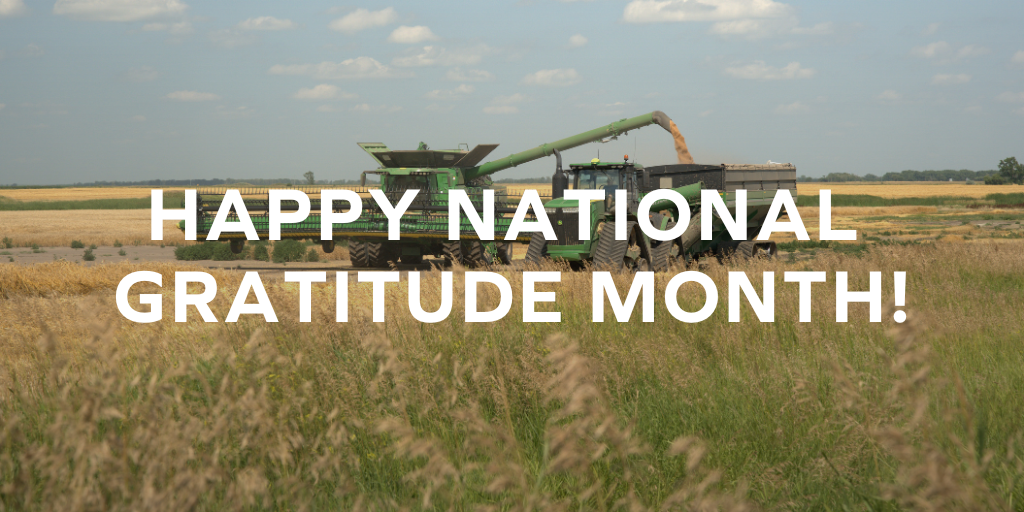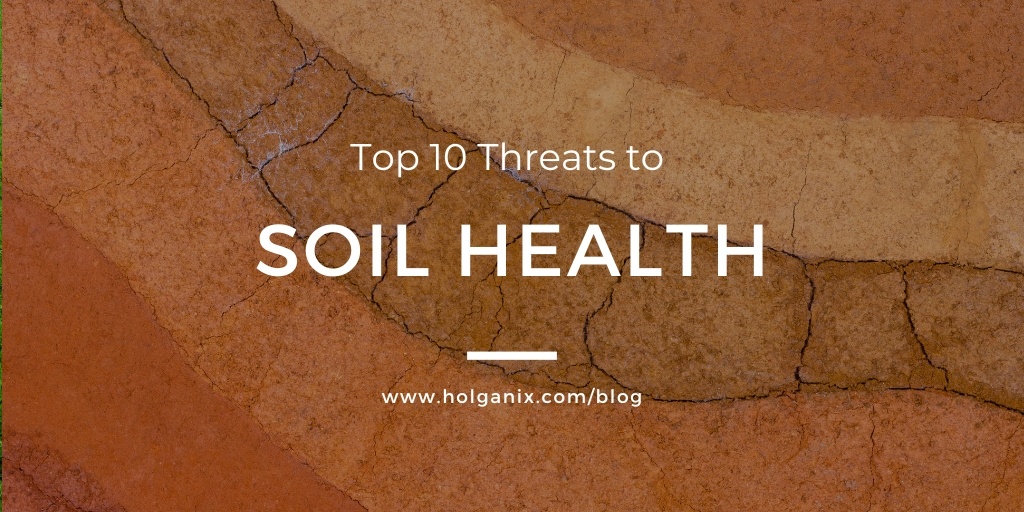
 Kaitlyn Ersek
|
July 11, 2024
|
1:00 PM
Kaitlyn Ersek
|
July 11, 2024
|
1:00 PM
.jpg?width=1024&height=512&name=Blog%20headers%20%232%20(87).jpg)
According to SARE, more than 15.4 million acres of cover crops were planted in 2017, marking a 50% increase over five years. This rapid adoption is driven not only by financial incentives but also by an understanding that utilizing cover crops has far-reaching benefits, including building soil health, and nutrient enrichment.
According to a survey of more than 750 American farmers by the Conservation Technology Information Center (CTIC) and the USDA North Central Region Sustainable Agriculture Research and Education (SARE) program, "Farmers identified improved soil health as a key overall benefit from cover crops. Reduction in soil compaction, improved nutrient management, and reduced soil erosion were other key benefits cited for cover crops."
In recent years, the adoption of cover crops has gained significant traction among farmers looking to improve their soil health and boost their bottom line. According to a study by the Sustainable Agriculture Research and Education (SARE) program, which surveyed more than 1,900 farmers, those who use cover crops report an average yield increase of 3% in their corn yield and 4.9% increase in soybeans after five consecutive years of cover crop use. In the drought year of 2012, farmers reported even greater yield increases when they seeded cover crops: 9.6% in corn and 11.6% in soybeans.
In this blog post, we explore:
- The benefits of using cover crops
- How to get paid to incorporate cover crops in your fields?
- How Holganix Bio 800+ Breakdown maximizes cover crop benefits at an accelerated pace?
6 Key Benefits For Using Cover Crops In Your Fields
1. Nutrient Enrichment
Cover crops play a crucial role in improving soil fertility. One of the key benefits is nutrient enrichment. Cover crops absorb excess nutrients from the soil, preventing them from leaching into groundwater or being lost through erosion. When the cover crops are terminated and incorporated into the soil, these nutrients are released, making them available for the next crop.
In addition, root exudates from cover crops feed and help maintain the soil microbiome during those times of the year when there are no growing crop roots. The soil microbiome is critical for efficient nutrient cycling and overall soil health.
Overall, nutrient recycling helps to maintain soil fertility and reduce the need for synthetic fertilizers. For instance, leguminous cover crops like clover and vetch can fix atmospheric nitrogen, enriching the soil with this vital nutrient and decreasing the dependence on nitrogen fertilizers.
2. Nutrient Enrichment
Long term, cover crops can improve yield. Farmers who use cover crops have reported an average yield increase of 3% in their corn yield and 4.9% increase in soybeans after five consecutive years of cover crop use. For those farmers wanting to accelerate the benefits timeline, see below on how Holganix can help speed up your soil health journey.
The mechanisms behind these yield increases are multifaceted. Cover crops enhance soil health by adding organic matter, improving soil structure, and increasing microbial activity, all of which contribute to better root growth and nutrient uptake in the crops that follow. Additionally, cover crops can suppress weeds, reduce pest pressures, and improve water infiltration, creating a more favorable environment for cash crops.
Studies have also shown that in drought conditions, fields with cover crops fare better due to improved soil moisture retention, which can lead to higher yields even in challenging growing seasons. In the drought year of 2012, farmers reported even greater yield increases when they seed cover crops: 9.6% in corn and 11.6% in soybeans.
3. Improving Soil Structure, Preventing Soil Compaction, boosting Carbon Sequestration
One of the important roles of cover crops is preventing soil compaction. The roots of cover crops feed soil fungi, and fungi produce the glue that holds soil particles together, preventing them from being compacted by heavy machinery or rainfall impact. This is especially beneficial in areas with high traffic or heavy clay soils. Cover crops with deep roots, such as daikon radishes, can break up hardpan and improve soil aeration.
Additionally, cover crops improve soil structure by adding organic matter. The roots of cover crops penetrate the soil, creating channels for air and water movement. This improves soil aeration and drainage, creating a favorable environment for beneficial soil organisms.
The organic matter also acts as a sponge, holding moisture and nutrients, further enhancing soil fertility. Practices like cover crops help increase organic matter in the soil. In fact, one percent of organic matter in the top six inches of soil can hold about 27,000 gallons of water per acre. Increasing organic matter increases the holding capacity for water, making land more resilient to extreme weather. Plus, boosting organic matter in soil significantly enhances carbon sequestration, as soil organic matter can store up to 58% of soil carbon.
4. Erosion Control
Cover crops protect the soil surface from erosion by wind and water. The foliage of cover crops shields the soil, while their root systems bind the soil particles together, reducing the risk of erosion. This is especially beneficial on slopes or fields prone to erosion. By preventing soil loss, cover crops help maintain soil fertility and structure over time.
5. The Role of Weed Suppression in Cover Crops
Additionally, cover crops outcompete weeds for resources such as light, water, and nutrients. They shade the soil, making it difficult for weed seeds to germinate and establish. Some cover crops, like rye and oats, also release natural herbicides that suppress weed growth. By controlling erosion and suppressing weeds, cover crops help to maintain a healthy and productive soil.
6. Protecting Water Quality
Cover crops play a crucial role in protecting water quality by curbing soil erosion and reducing nitrogen losses. By maintaining soil structure and preventing runoff, cover crops help keep sediment and nutrients from entering waterways. According to recent studies, cover crops can reduce nitrogen losses by an average of 48%, significantly lowering the risk of water contamination.
How to Get paid to incorporate Cover Crops?
Farmers can receive financial incentives and support to incorporate cover crops through various programs and initiatives. Here are some key ways farmers can get paid to use cover crops:
1. USDA Programs
The United States Department of Agriculture (USDA) offers several programs and grants that provide financial assistance for cover crops:
- Environmental Quality Incentives Program (EQIP): EQIP provides financial and technical assistance to farmers to help plan and implement conservation practices, including cover cropping. Farmers can receive cost-share payments on average of $50 an acre (dependent on the state and other stipulations) to cover a portion of the expenses for planting and managing cover crops.
- Conservation Stewardship Program (CSP): CSP encourages farmers to maintain and improve their existing conservation activities and adopt additional conservation measures. Cover cropping is one of the practices supported by CSP, with participants receiving annual payments based on their level of conservation performance.
- Sustainable Agriculture Research and Education (SARE): SARE provides grants for research and education projects that promote sustainable farming practices, including cover crops. Farmers can apply for funding to support on-farm research and demonstration projects.
- Conservation Innovation Grants program (CIG): CIG, also managed by the USDA NRCS, supports the development of innovative conservation approaches and technologies, including those involving cover crops. Farmers can partner with organizations to apply for these grants, which fund projects that demonstrate the environmental and economic benefits of cover cropping.
2. State and Regional Programs
Many states and regions have their own programs to support cover cropping. Below you’ll find a few listed, be sure to check in with your local extension office, university, and college ag programs and seek assistance from your state office for the most up-to-date programs.
- Maryland’s Cover Crop Program: Maryland offers one of the most robust state programs, providing farmers with cost-share assistance to plant cover crops. The program aims to improve water quality in the Chesapeake Bay by reducing nutrient runoff.
- Iowa’s Water Quality Initiative: Iowa’s initiative includes a cost-share program for cover crops, aiming to improve water quality through nutrient reduction strategies.
- The California Healthy Soils Program: This program offers financial incentives to farmers and ranchers for implementing cover cropping practices to enhance soil health. These incentives include grants to cover costs associated with purchasing cover crop seeds, planting, and managing cover crops.
- Some states even offer discounts on insurance for those who farm with a cover crop.
3. Carbon Credit Markets
With the growing interest in carbon sequestration, some programs allow farmers to earn carbon credits for implementing cover crops as a documented practice change. These credits can be sold in carbon markets, providing an additional revenue stream for farmers practicing sustainable agriculture.
How Holganix Bio 800+ Breakdown Can Help?
Holganix Bio 800+ Breakdown charges soil with a consortium of over 800 species of soil microbes, nitrogen, and microbe food. This is a tremendous tool to support the cover crops practice and accelerate its benefits. These microbes have heightened species that play a special role in crop residue breakdown – both the breakdown of the shoots above the soil, and the roots below the soil. The breakdown of the residue releases nutrients and water to the soil. Plus, using Holganix Bio 800+ Breakdown on any fall planted cover crops through residue, will also improve emergence and stand establishment.
Specifically, as it pertains to cover crops, Bio 800+ Breakdown provides the following benefits:
- Unlocks nutrients through nutrient sequestration and through the breakdown of residue.
- Increases yield and overall crop quality.
- Builds soil structure by improving soil aggregation and promoting root growth.
- Promotes robust root development which reduces erosion.
- Enhancing water quality by enhancing soil structure and improving organic matter, ultimately reducing runoff and nutrients leaching into waterways.
Watch this 3.5-minute video explanation from David Stark, Ph.D. and Holganix President of Agriculture. If you are reading this blog via email, click here to access the video.
Comments
-2.jpg)
-1.jpg)
-1.jpg)
-1.jpg)
.jpg)

- blog (423)
- lawn care (378)
- agriculture (221)
- golf course (205)
- sports turf (202)
- holganix reviews (168)
- story (126)
- Holganix Bio 800 (32)
- farmers (28)
- soil health (24)
- soil (17)
- trees (16)
- webinar (16)
- Holganix Bio 800 Breakdown (14)
- holganix case studies (12)
- Holganix Bio 800 Agriculture (11)
- Soil heath (10)
- soil microbes (10)
- Holganix Bio 800+ Revive (9)
- carbon (9)
- crop residue (8)
- holganix results (8)
- fertilizer (7)
- Gratitude (6)
- turf (6)
Related Posts
.jpg)

.jpg)

.png)



.webp)
-1%20(1).webp)
-831535-2.webp)


